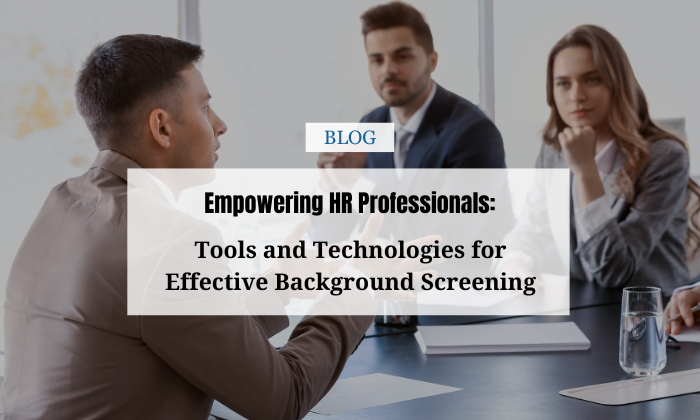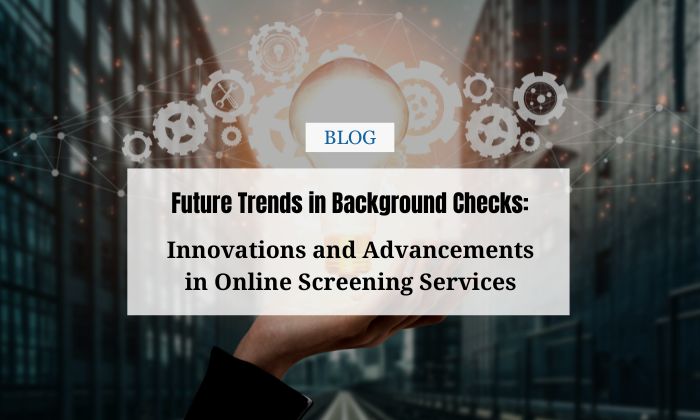In today’s rapidly evolving business landscape, where the pursuit of top-tier talent is an ongoing challenge, the art of talent acquisition has taken on a new level of significance. In a world characterized by innovation, digital transformation, and unprecedented shifts in work dynamics, organizations are redefining how they attract, engage, and retain the very best individuals. Nowhere is this quest more competitive and dynamic than in the United States – a nation known for its diverse industries, cutting-edge technologies, and ever-evolving workforce demands.
In this environment, the process of talent acquisition has transcended beyond mere recruitment; it has become a strategic imperative that influences an organization’s ability to remain competitive and thrive. With talent serving as a cornerstone for success, the methods employed to identify and secure the right individuals must evolve in tandem. The journey to acquire exceptional talent is no longer a linear path but a multifaceted endeavor that requires innovative thinking, data-driven insights, and a commitment to inclusivity and diversity.
Step 1: Define Clear Objectives and Roles
In the intricate dance of talent acquisition, the first step towards elevating your approach is to define clear and targeted objectives, as well as a precise understanding of the roles your organization seeks to fill. This foundational step provides a roadmap that guides every subsequent action in your talent acquisition journey.
Why is This Step Vital?
Without a clear sense of purpose, talent acquisition efforts risk becoming directionless and inefficient. Defining objectives helps align your recruitment strategy with broader business goals, ensuring that every hire contributes to the organization’s growth and success. Similarly, articulating well-defined roles is essential to attract candidates who possess the specific skills, experience, and attributes required for each position.
How to Implement:
- Strategic Alignment: Collaborate with leadership and key stakeholders to align talent acquisition objectives with overall business objectives. Understand the organization’s growth trajectory, expansion plans, and critical areas of focus.
- Role Profiling: Create detailed and accurate job descriptions for each role. Clearly outline responsibilities, qualifications, and expectations. Tailor the descriptions to attract candidates who resonate with the unique challenges and opportunities the roles offer.
- Skill and Competency Mapping: Identify the skills, competencies, and attributes that are essential for success in each role. This ensures that your recruitment efforts focus on candidates who possess the qualities necessary to excel in their positions.
- Long-Term Vision: Consider the long-term impact of each hire. Will these roles evolve as the organization grows? Anticipate how the responsibilities and requirements may change over time to ensure sustainable talent acquisition.
- Communication and Transparency: Maintain open lines of communication with internal teams involved in the hiring process. Clearly convey the objectives and roles to recruiters, interviewers, and hiring managers to ensure a unified approach.
Benefits:
- Enhanced alignment between talent acquisition and business objectives.
- Efficient use of resources and reduced time-to-hire through focused efforts.
- Attraction of candidates who are genuinely interested in contributing to the organization’s goals.
- Increased likelihood of identifying candidates with the right skills and cultural fit for each role.
By establishing clear objectives and roles at the outset, organizations lay a strong foundation for a targeted and effective talent acquisition strategy. This strategic clarity not only streamlines the recruitment process but also sets the stage for future success in attracting and retaining top talent.
Step 2: Build a Compelling Employer Brand
In the dynamic realm of talent acquisition, a compelling employer brand is a beacon that attracts top talent and differentiates your organization from the competition. Building a strong employer brand goes beyond showcasing the perks of working within your company; it encapsulates the unique culture, values, and opportunities that make your organization an irresistible destination for skilled professionals.
Why is This Step Vital?
A powerful employer brand not only attracts high-caliber candidates but also fosters long-term loyalty among employees. It sends a clear message to potential hires about what they can expect and what sets your organization apart. In a competitive talent landscape, a compelling employer brand can be the decisive factor that sways a candidate’s decision.
How to Implement:
- Define Your Identity: Uncover and articulate the core values, mission, and culture that define your organization. Understand what makes your workplace special and how it resonates with the aspirations of potential hires.
- Authentic Storytelling: Craft authentic and engaging stories that highlight real employee experiences and accomplishments. Showcase the impact individuals have within your organization and the opportunities for growth.
- Visual Identity: Develop consistent visual elements, such as logos, colors, and imagery, that reflect your employer brand across various platforms, from social media to job postings.
- Employee Testimonials: Encourage current employees to share their experiences and perspectives through testimonials, blogs, and videos. Authentic voices carry a powerful message of authenticity and credibility.
- Engage Online: Leverage social media platforms to showcase company culture, values, and achievements. Engage with potential candidates through regular updates, insights, and behind-the-scenes glimpses.
- Candidate-Centric Content: Create content that addresses candidates’ questions and concerns, such as career growth, work-life balance, and development opportunities. Provide valuable insights that demonstrate your commitment to employees’ success.
Benefits:
- Attraction of top talent who resonate with your organization’s values and culture.
- Increased candidate engagement and application rates due to an authentic and compelling employer brand.
- Enhanced retention rates as employees find alignment with the promises of the brand.
- Differentiation in a competitive market, positioning your organization as an employer of choice.
- Strengthened organizational identity and pride among existing employees.
By building a compelling employer brand, organizations create a magnet for top talent while nurturing a sense of belonging and purpose among their workforce. This step is a critical investment in the long-term success of your talent acquisition strategy, fostering a positive cycle of attracting, engaging, and retaining exceptional individuals.
Step 3: Implement Data-Driven Recruitment
In the age of information, harnessing the power of data-driven recruitment has become a game-changer in securing top-tier talent. By leveraging data analytics and insights, organizations can make informed decisions, optimize recruitment processes, and identify trends that lead to successful hires. This strategic approach ensures that your talent acquisition efforts are not only efficient but also highly effective.
Why is This Step Vital?
Data-driven recruitment minimizes guesswork and maximizes results. It empowers organizations to identify patterns, evaluate the performance of different recruitment channels, and tailor strategies to target the most promising candidates. This evidence-based approach reduces time-to-fill roles, enhances candidate quality, and enhances overall recruitment ROI.
How to Implement:
- Define Key Metrics: Identify the key performance indicators (KPIs) that matter most to your organization, such as time-to-fill, cost-per-hire, and quality-of-hire. These metrics will serve as benchmarks for your data analysis.
- Utilize Applicant Tracking Systems (ATS): Leverage modern ATS platforms to centralize recruitment data, streamline processes, and generate insights. ATS systems enable you to track candidate progress, analyze application sources, and manage candidate pipelines.
- Collect Comprehensive Data: Gather data throughout the recruitment lifecycle, from initial application to onboarding and beyond. Include information about sourcing channels, candidate engagement, interview outcomes, and employee performance.
- Analyze and Refine: Regularly review and analyze recruitment data to identify trends, bottlenecks, and areas for improvement. Use data insights to refine recruitment strategies, optimize job descriptions, and enhance candidate experiences.
- Predictive Analytics: Explore predictive analytics tools that forecast candidate success based on historical data and characteristics. This allows you to make more accurate predictions about a candidate’s potential fit and performance.
- Diversity and Inclusion Analytics: Use data to monitor and improve diversity and inclusion efforts within your recruitment process. Ensure that your strategies are attracting and advancing candidates from diverse backgrounds.
Benefits:
- Informed decision-making based on data-driven insights and trends.
- Streamlined and efficient recruitment processes with reduced time-to-fill.
- Enhanced candidate quality and fit, resulting in better long-term hires.
- Improved resource allocation through optimized allocation of recruitment budgets.
- Continuous improvement through data-backed adjustments and refinements.
By integrating data-driven recruitment into your talent acquisition strategy, organizations can position themselves ahead of the curve. This step transforms recruitment from a subjective process into a data-powered endeavor, yielding measurable results and aligning hiring efforts with organizational goals. As you navigate the intricate landscape of talent acquisition, data-driven insights will serve as your North Star, guiding you toward exceptional candidates and fostering success.
Step 4: Embrace Diversity and Inclusion
In today’s interconnected world, fostering a diverse and inclusive workforce isn’t just a moral imperative – it’s a strategic advantage. Embracing diversity and inclusion (D&I) is a vital step in elevating your talent acquisition approach. A diverse workforce brings fresh perspectives, drives innovation, and enhances overall organizational performance. To attract top talent and create a workplace where everyone can thrive, organizations must proactively weave D&I into their talent acquisition strategies.
Why is This Step Vital?
Diverse and inclusive workplaces are magnets for top talent. Candidates seek environments that value their unique backgrounds, experiences, and perspectives. By promoting a culture of inclusion, organizations can attract a broader pool of candidates, tap into a wider range of skills, and foster an atmosphere of creativity and collaboration.
How to Implement:
- Assess Current Practices: Begin by evaluating your current talent acquisition practices to identify areas where diversity and inclusion can be strengthened. This includes reviewing sourcing channels, job descriptions, interview processes, and candidate evaluation criteria.
- Diverse Sourcing: Broaden your candidate pool by actively sourcing talent from diverse backgrounds. Explore various platforms, networks, and organizations that cater to underrepresented groups.
- Inclusive Job Descriptions: Craft job descriptions that use inclusive language and emphasize the organization’s commitment to diversity and inclusion. Clearly communicate your dedication to creating an environment where all employees can thrive.
- Unbiased Screening: Implement blind recruitment techniques, such as removing personally identifiable information from resumes during initial screenings. This helps eliminate unconscious biases and focuses solely on candidates’ qualifications.
- Structured Interviews: Develop structured interview processes with standardized questions that assess competencies and skills relevant to the job. This reduces the potential for bias and ensures fair evaluations.
- Diverse Interview Panels: Assemble diverse interview panels to evaluate candidates. Multiple perspectives help mitigate biases and provide a more comprehensive assessment.
- Training and Awareness: Offer training to hiring teams on unconscious bias, diversity, and inclusion. Raise awareness about the importance of D&I in talent acquisition and provide tools to mitigate biases.
- Diverse Hiring Committees: Establish diverse hiring committees that bring different viewpoints to candidate evaluations. This ensures a well-rounded assessment and promotes fair decision-making.
- Employee Resource Groups (ERGs): Leverage ERGs to create a welcoming and supportive environment for employees from diverse backgrounds. Highlight these groups during the recruitment process to showcase your commitment to inclusivity.
Benefits:
- Expanded talent pool with candidates from various backgrounds and experiences.
- Enhanced creativity and innovation resulting from diverse perspectives.
- Improved employee morale and engagement due to a culture of inclusion.
- Enhanced employer reputation, attracting top talent seeking diverse workplaces.
- Better decision-making and problem-solving through a broader range of viewpoints.
By weaving diversity and inclusion into your talent acquisition strategy, you position your organization for success in an increasingly global and interconnected business landscape. Embracing diversity isn’t just a checkbox – it’s a transformative practice that fuels growth, innovation, and excellence. As you navigate the dynamic world of talent acquisition, remember that building a diverse and inclusive workforce isn’t just a step – it’s an ongoing journey towards a stronger, more vibrant organization.
Step 5: Streamline and Optimize the Hiring Process
In the fast-paced realm of talent acquisition, efficiency is key. Streamlining and optimizing your hiring process can make a world of difference in attracting top-tier candidates and securing their commitment. A well-designed, efficient process not only saves time and resources but also enhances the candidate experience, leaving a positive impression of your organization. By focusing on process improvement, you can expedite decision-making, reduce time-to-hire, and ensure a seamless journey for both candidates and hiring teams.
Why is This Step Vital?
In today’s competitive job market, top talent often has multiple opportunities on the table. A slow and convoluted hiring process can lead to candidate drop-offs, missed opportunities, and an unfavorable reputation. Conversely, a streamlined process demonstrates your organization’s respect for candidates’ time, boosts engagement, and positions you as an employer of choice.
How to Implement:
- Map Out the Process: Start by mapping your current hiring process from job requisition to onboarding. Identify bottlenecks, redundant steps, and areas where delays often occur.
- Set Clear Guidelines: Establish clear guidelines for each stage of the hiring process. Define roles, responsibilities, and timelines to ensure consistency and transparency.
- Technology Integration: Leverage technology to automate and centralize recruitment tasks. Utilize applicant tracking systems (ATS) to manage candidate pipelines, schedule interviews, and communicate with candidates.
- Simplified Application Process: Create a user-friendly online application process that captures essential information without overwhelming candidates. Ensure that your application portal is mobile-responsive for easy access.
- Efficient Screening: Implement efficient resume screening methods, such as keyword matching, to quickly identify qualified candidates. Utilize pre-employment assessments to assess skills and qualifications early in the process.
- Collaborative Evaluation: Facilitate collaboration among hiring teams with a shared evaluation platform. Enable team members to provide feedback, rate candidates, and share insights.
- Timely Communication: Communicate regularly with candidates to keep them informed about their application status. Promptly respond to inquiries and provide updates on next steps.
- Structured Interviews: Use structured interview guides and competency-based questions to ensure consistency and effective evaluation. Train interviewers on effective interviewing techniques.
- Candidate Feedback: Gather feedback from candidates about their experience during the hiring process. Use this feedback to identify areas for improvement and enhance the candidate journey.
- Continuous Improvement: Regularly review and refine your hiring process based on data and feedback. Identify opportunities for further streamlining and optimization.
Benefits:
- Faster time-to-hire, minimizing the risk of losing top candidates to competitors.
- Enhanced candidate experience, fostering positive perceptions of your organization.
- Improved communication and collaboration among hiring teams.
- Increased efficiency, enabling recruiters and hiring teams to focus on strategic tasks.
- Enhanced data-driven decision-making through centralized systems and analytics.
Streamlining and optimizing your hiring process demonstrates your organization’s commitment to efficiency, professionalism, and respect for candidates’ time. By providing a seamless and efficient experience, you differentiate your organization in the eyes of potential hires and create a positive impression that extends beyond the recruitment process. As you embark on this journey of process enhancement, remember that every step toward efficiency brings you closer to securing the exceptional talent that drives your organization’s success.
Conclusion
In the realm of talent acquisition, strategic steps are imperative. In the competitive US landscape, agility, innovation, and foresight are essential to attract and retain top talent. Through clear objectives, a strong employer brand, data-driven recruitment, diversity, and streamlined hiring, you transform your approach for the best-fit candidates.
As the business landscape evolves, so must talent acquisition. These steps form the foundation of an effective strategy. Aligning with these principles creates a dynamic recruitment system, meeting today’s needs and positioning for future success.
Your organization’s success relies on its people. Strategic talent acquisition shapes both your workforce and future. Stand out, attract exceptional talent, and drive growth. Elevate your talent acquisition with these steps for a brighter future.
Securecheck360
At Securecheck360, we specialize in providing comprehensive Employment Background Screening Services to businesses of all sizes, both nationally and internationally. Our tailored solutions are designed to cater to the specific needs of Small, Mid-Size, and Large organizations, ensuring that they have the necessary tools and information to make informed hiring decisions.
To know more about our services, book your free demo today!







